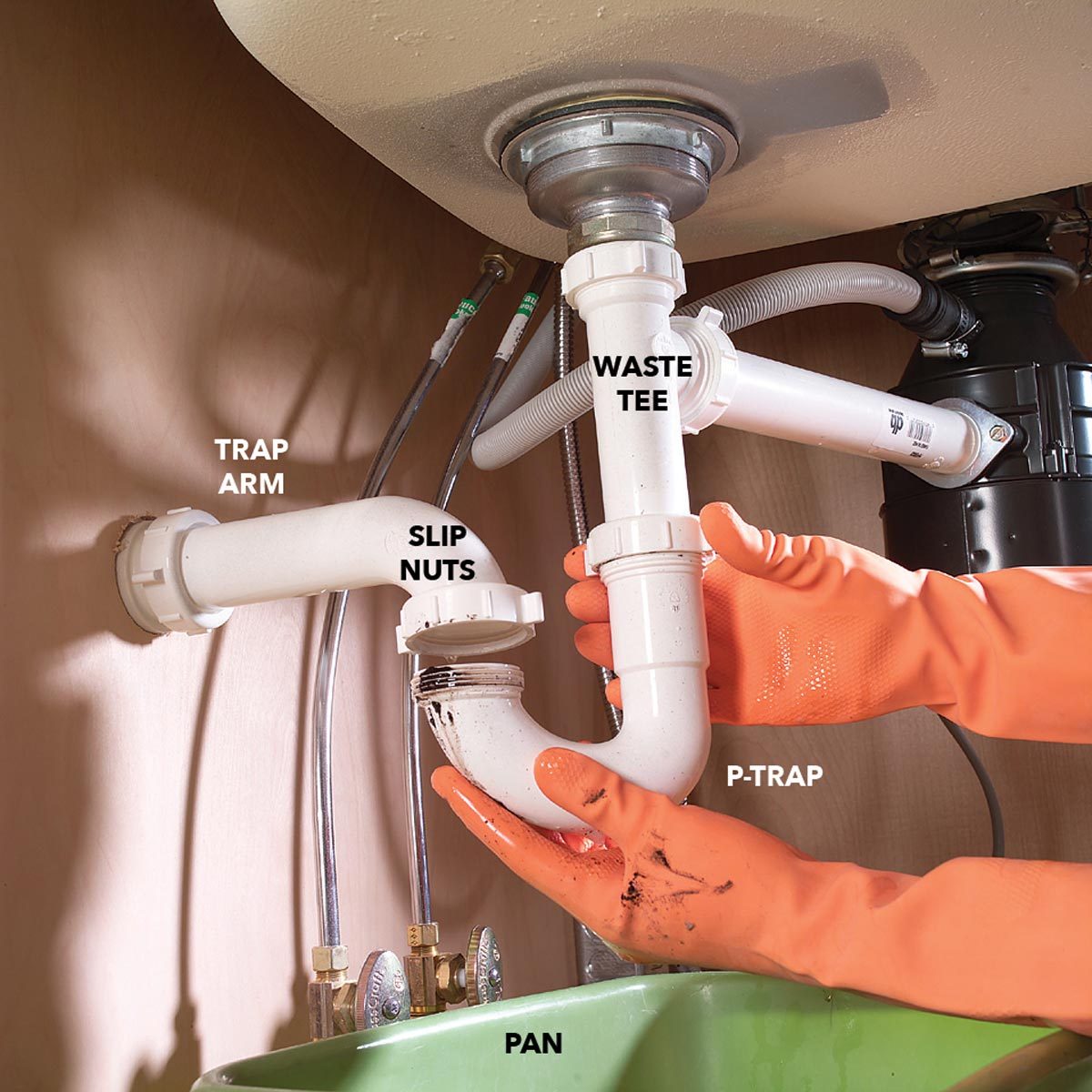P-Trap Function and Components: Bathroom Sink P Trap

Bathroom sink p trap – The p-trap is an essential component of a bathroom sink’s plumbing system. It plays a crucial role in preventing sewer gases from entering the bathroom and ensuring the proper drainage of water.
A p-trap consists of several components:
- Trap Arm: The horizontal pipe that connects the sink drain to the vertical drainpipe.
- Trap Body: The curved section of the p-trap that creates the “P” shape. It holds water, which forms a barrier against sewer gases.
- Outlet Arm: The vertical pipe that connects the trap body to the drainpipe.
- Slip Nuts: The nuts that secure the trap to the sink drain and the drainpipe.
- Washers: The rubber or plastic discs that create watertight seals between the trap components.
The diagram below illustrates the structure of a p-trap:
[Image of a p-trap]
Types of P-Traps for Bathroom Sinks

P-traps are essential components of bathroom sinks, as they prevent sewer gases from entering the bathroom and create a water seal to prevent clogs. Different types of p-traps are available, each with its own advantages and disadvantages.
S-Trap
S-traps are the most basic type of p-trap, consisting of a single curved pipe that forms an S-shape. They are easy to install and relatively inexpensive, but they are also more prone to clogging than other types of p-traps.
P-Trap, Bathroom sink p trap
P-traps are similar to S-traps, but they have a longer, more gradual curve that forms a P-shape. This design makes them less likely to clog than S-traps, and they are also easier to clean.
Bottle Trap
Bottle traps are named for their bottle-shaped design. They have a large, bulbous bottom that collects debris, which makes them less likely to clog. Bottle traps are also relatively easy to clean, but they can be more expensive than other types of p-traps.
Materials Used in P-Trap Construction
P-traps can be made from a variety of materials, including:
- Plastic: Plastic p-traps are lightweight and inexpensive, but they are not as durable as metal p-traps.
- Metal: Metal p-traps are more durable than plastic p-traps, but they are also more expensive. Metal p-traps can be made from a variety of metals, including stainless steel, brass, and copper.
Installation and Maintenance of P-Traps

Installing and maintaining P-traps in bathroom sinks are crucial tasks for ensuring proper drainage and preventing unpleasant odors. To achieve optimal performance, it’s essential to follow the correct steps and utilize the appropriate tools and materials. Additionally, understanding common maintenance issues and troubleshooting tips will help extend the life of the P-trap and prevent potential plumbing problems.
Installation
Installing a P-trap in a bathroom sink involves several steps:
1. Gather the necessary tools and materials, including a P-trap, slip nuts, washers, a wrench, and plumber’s putty.
2. Place a bead of plumber’s putty around the base of the sink drain and insert the P-trap into the drain.
3. Secure the P-trap to the sink drain by tightening the slip nuts using a wrench.
4. Connect the other end of the P-trap to the drainpipe using a slip nut and washer.
5. Tighten the slip nut securely, ensuring a watertight seal.
Maintenance
Regular maintenance of P-traps is essential to prevent clogs and unpleasant odors:
1. Periodically clean the P-trap by removing the slip nuts and disassembling it.
2. Remove any debris or hair that may have accumulated in the trap.
3. Inspect the washers and replace them if they appear worn or damaged.
4. Reassemble the P-trap and tighten the slip nuts securely.
5. If the P-trap becomes clogged, try using a drain snake or a chemical drain cleaner to clear the obstruction.